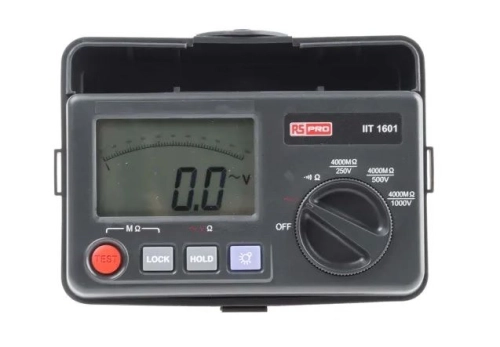166-838 - RS PRO Volt-Stick PRO Non Contact Voltage Detector, 230V ac to 1000V ac
166-838 - RS PRO Volt-Stick PRO Non Contact Voltage Detector, 230V ac to 1000V ac
Category: Electrical Test Equipment
Product Details
RS PRO Volt Stick PRO Non-Contact Voltage Indicator
The Volt Stick PRO is a pen style non-contact voltage detector from our high quality RS PRO brand. Able to safely check the presence of an AC voltage within cables, wall sockets and fuses junction boxes, conveniently no current flow is needed for operation. This is an essential tool for every electrician, technician or tradesperson.
Designed with a patented forked tip which has unsurpassed selectivity. This is because the maximum sensitivity is between the two prongs of the fork. The Volt Stick PRO also includes a tip adapter for larger cables and fuses, along with a clip in shunt for use as conventional low selectivity indicator.
Features and Benefits:
• Powerful red light tip which glows when voltage detected
• Fully insulated
• Altitude 2000 meters
• Non-Contact Detection of AC Voltage 230 V ac to 1000 V ac
• Battery: 2 x 1.5 V batteries (AAA) (included)
• Operating Temperature -10°C to 50°C)
• Rugged, double moulded case
• Safety Compliance: CAT III 1000 V
Frequently asked questions:
What is a non-contact voltage tester used for?
Voltage testers or detectors are used to check the flow of current through a circuit. They can be used to check safety, or to ensure equipment is functioning correctly. They can also test for the current strength, whether the circuit is grounded correctly or to ensure no current is flowing at all so that work can be begin on the circuit.
How do non-contact voltage testers work?
Also known as a voltage detector, voltage tester pens, sensors or test pens. They allow the user to test electrical conductors without touching them. Non-contact testers are the safest and easiest way to detect electric fields or voltage. Voltage testers utilise what is called capacitive coupling, the user holding the instrument provides a ground reference. The tester then detects changing electric field around the object or objects conducting an AC current. (Alternating current) Simply put, the user and the tester pen when near the electrical conductor will cause a small current to flow through the tester from the source, this is how it detects AC voltage.









